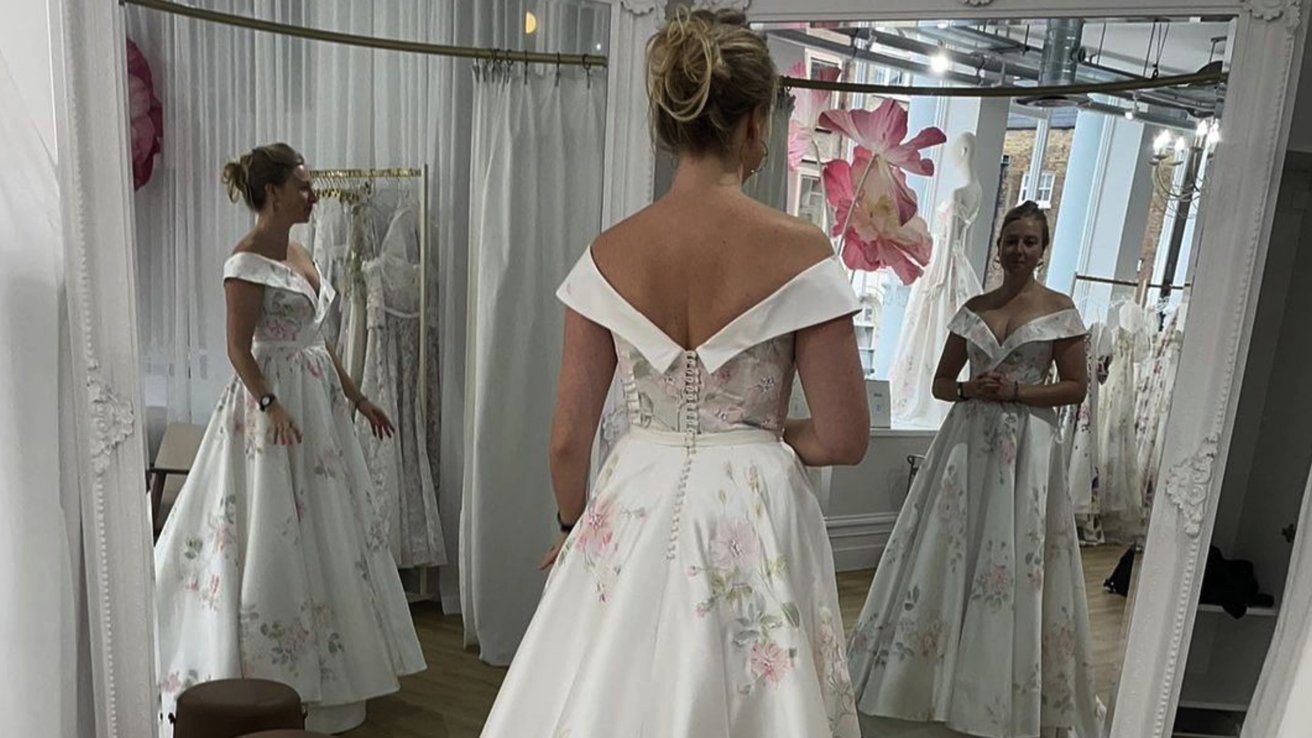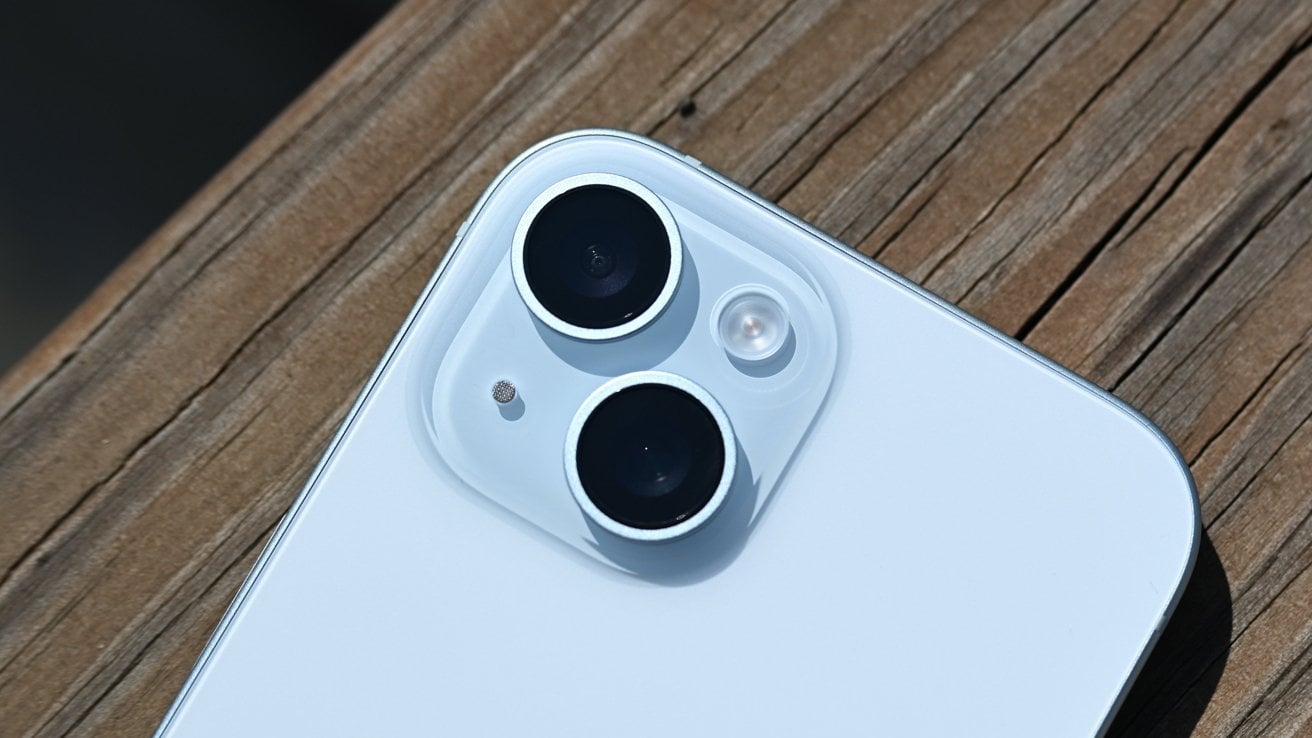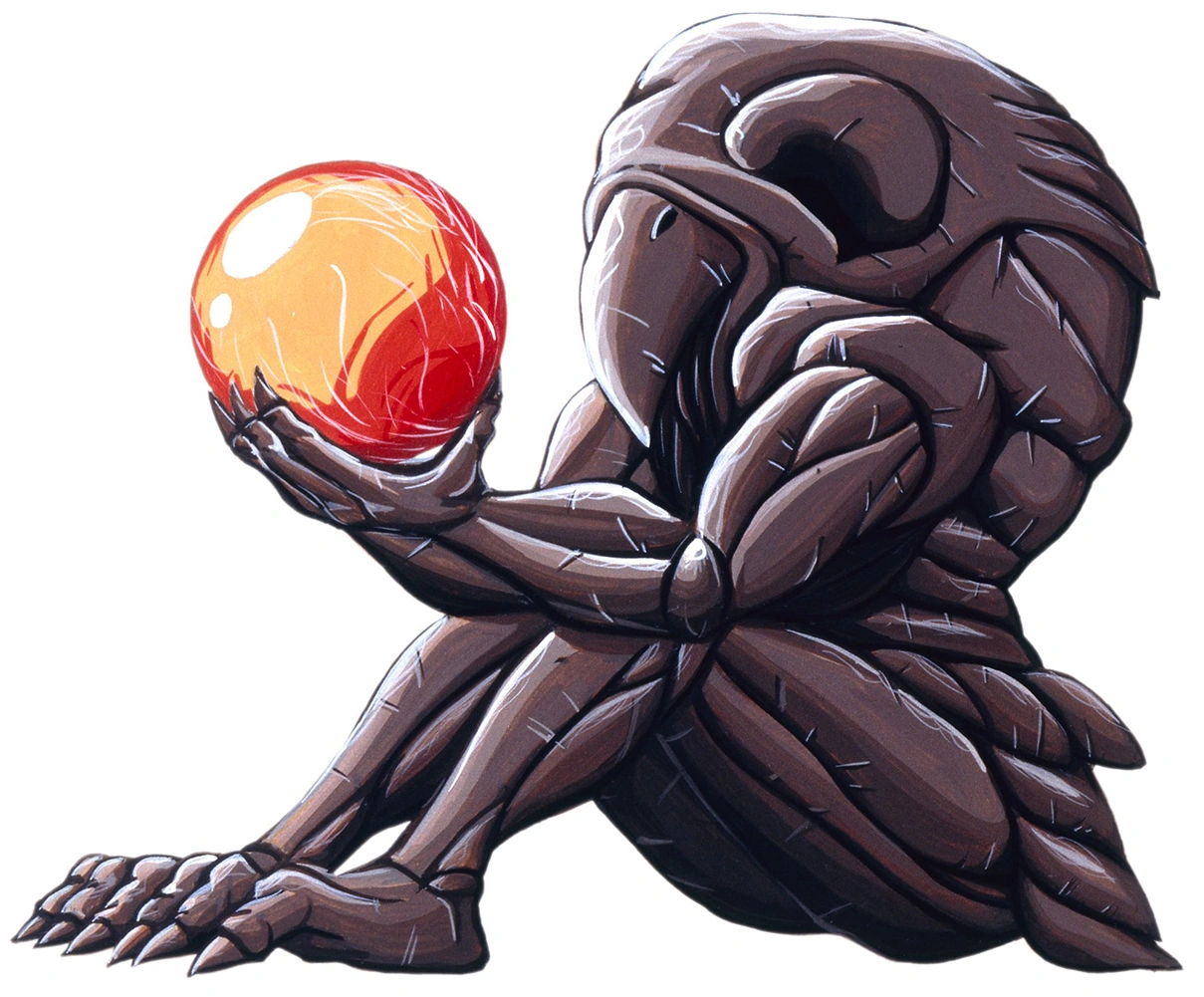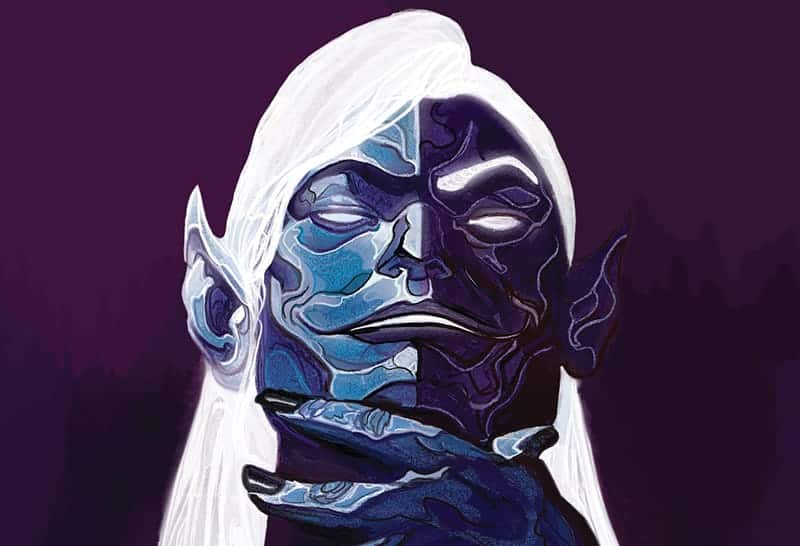A U.K. woman was photographed standing in a mirror where her reflections didn’t match, but not because of a glitch in the Matrix. Instead, it’s a simple iPhone computational photography mistake.
This story may be amusing, but it’s actually a serious issue if Apple is doing this and people are not aware of it because cellphone imagery is used in things like court cases. Relative positions of people in a scene really fucking matter in those kinds of situations. Someone’s photo of a crime could be dismissed or discredited using this exact news story as an example – or worse, someone could be wrongly convicted because the composite produced a misleading representation of the scene.
I see your point, though I wouldn’t put it that far. It’s an edge case that has to happen in a very short duration.
Similar effects can be acheived with traditional cameras with rolling shutter.
If you’re only concerned of relative positions of different people during a time frame, I don’t think you need to be that worried. Being aware of it is enough.I don’t think that’s what’s happening. I think Apple is “filming” over the course of the seconds you have the camera open, and uses the press of the shutter button to select a specific shit from the hundreds of frames that have been taken as video. Then, some algorithm appears to be assembling different portions of those shots into one “best” shot.
It’s not just a mechanical shutter effect.
I’m aware of the differences. I’m just pointing out that similar phenomenon and discussions have been made since rolling shutter artifacts have been a thing. It still only takes milliseconds for an iPhone to finish taking it’s plethora of photos to composite. For the majority of forensic use cases, it’s a non issue imo. People don’t move that quick to change relative positions substantially irl.
Did you look at the example in the article? It’s clearly not milliseconds. It’s several whole seconds.
You don’t need a few whole seconds to put an arm down.
Edit: I should rephrase. I don’t think computational photography algorithms would risk compositing photos that are whole seconds apart. In well lit environments, one photo only needs 1/100 seconds or less to expose properly. Using photos that are temporally too far apart risk objects moving too much in the frame, and thus fail to composite.
There’s three different arm positions in a single picture. That doesn’t happen in the blink of an eye.
The camera is taking many frames over a relatively long time to do this.
This is nothing at all like rolling shutter, and it’s very obvious from looking at the example in the article.
Those arm positions occur over the course of a fluid motion in a single second. How long does it take for you to drop your hands to your side or raise them to clasped from the side? It doesn’t take me more than about half a second as a deliberate movement.
I can also see the three arm positions being a single motion, just in three different time frames. If it really takes seconds to complete a composite, then it should also be very easy to reproduce, and not something so rare it makes it into the news. If I still can’t convince you, I guess we agree to disagree then.
There’s three different arm positions in a single picture. That doesn’t happen in the blink of an eye.
It’s a lot faster than you might be expecting. I found it helps to visualize it in person. Go to a mirror and start with your hands together like in the right side mirror. Now let your arms down naturally, to the position in the left side mirror. If you don’t move your arms at the same exact time, one elbow will still be parallel to the floor while the other elbow has extended already, just like in the middle position.
Thus, we can tell that the camera compiled the image from right to left.
A specific shit?
😎
I’m still waiting for the first time somebody uses it to zoom in on a car number plate and it helpfully fills it in with some AI bullshit with something else entirely.
We’ve already seen such a thing with image compression.
https://www.zdnet.com/article/xerox-scanners-alter-numbers-in-scanned-documents/
This was important in the Kyle Rittenhouse case. The zoom resolution was interpolated by software. It wasn’t AI per se, but the fact that a jury couldn’t be relied upon to understand a black box algorithm and its possible artifacts, the zoomed video was disallowed.
(this in no way implies that I agree with the court.)
The zoom resolution was interpolated by software. It wasn’t AI per se
Except it was. All the “AI” junk being hyped and peddled all over the place as a completely new and modern innovation is really just the same old interpolation by software, albeit software which is fueled by bigger databases and with more computing power thrown at it.
It’s all just flashier autocorrect.
As far as I know, nothing about AI entered into arguments. No precedents regarding AI could have been set here. Therefore, this case wasn’t about AI per se.
I did bring it up as relevant because, as you say, AI is just an over-hyped black box. But that’s my opinion, with no case law to cite (ianal). So to say that a court would or should feel that AI and fancy photoediting is the same thing is misleading. I know that wasn’t your point, but it was part of mine.
I watched that whole court exchange live, and it helped the defendant’s case that the judge was computer illiterate.
As it usually does. But the court’s ineptitude should favor the defense. It shouldn’t be an arrow in a prosecutor’s quiver, at least.
This isn’t an issue at all it’s a bullshit headline. And it worked.
This is the result of shooting in panorama mode.
In other news, the sky is blue
It should be. All computational photography has zero business being used in court
With all the image manipulation and generation tools available to even amateurs, I’m not sure how any photography is admissible as evidence these days.
At some point there’s going to have to be a whole bunch of digital signing (and timestamp signatures) going on inside the camera for things to be even considered.
All digital photography is computational. I think the word you’re looking for is composite, not computational.
Like, an episode of Bones or some shit.
Saved you a click

Preventing people from perpetuating clickbait “journalism” is so punk rock.
Damn, this photo is weirdly unsettling to me
I’m totally getting Black Swan vibes.
MVP
Not even a mistake, this is unavoidable if you move during a panorama. iPhones can’t pause time. Cool photo tho
Thank you for saying this. If you have ever shot a panoramic shot you know how steady you need to keep it on the line, otherwise you get a lot of weird things like this, not to mention if your moving while it’s happening.
Who wants photos of a fake reality? Might as well just AI generate them.
Generally the final photo is an accurate representation of a moment. Everything in this photo happened. It’s not really generating anything that wasn’t there. You can sometimes get similar results by exploiting the rolling shutter effect.
https://camerareviews.com/rolling-shutter/
It’s not like they’re superimposing an image of the moon over a night sky photo to fake astrophotography or something.
deleted
A photo is a fake reality. It’s a capture of the world from the perspective of a camera that no person has ever seen.
Sure we can approximate with viewfinders and colour match as much as possible but it’s not reality. Take a photo of a light bulb, versus look at a light bulb, as one obvious example.
This is just one other way to get less consistency in the time of different parts of the photos, but overall better capture what we want to see in a photo.
Your argument makes literally no sense. You’re, baselessly, assuming a person’s perspective is a prism of reality. There’s no such a thing - in fact, I’d rather trust reality as being detected by the sensors of a camera, with their known flaws, attributes and parameters, than trust the biological sensors at the back of your eyes or the biological wiring to the inside of your skull.
Case point: https://youtu.be/UtKt8YF7dgQ?si=G-ni_azX0PYtfUBg And other selective attention demonstrations. People are unreliable and easily manipulated.
Here is an alternative Piped link(s):
https://piped.video/UtKt8YF7dgQ?si=G-ni_azX0PYtfUBg
Piped is a privacy-respecting open-source alternative frontend to YouTube.
I’m open-source; check me out at GitHub.
Yes, but that’s the reality from the perspective of the camera, which will be slightly different from a perspective of the person operating it.
If the camera is out of focus, is that more or less accurate than a phone camera choosing the least out of focus frame, even if half a second after you clicked?
There is no objective reality in pictures or photos or art, only what we perceive. We now value real life activity shots. When cameras needed long exposure, it was still life portrait by necessity. Both show different versions of reality.
Again, you’re saying that the camera has flaws, ergo it’s imperfect, but in a known way. It’s the same for phone photos. They are imperfect but in a known way that leads to more frequent desirable pics.
However I think most cameras and most people traditionally have wanted the most accurate photos possible. If the camera is outputting fiction that can be a big problem.
Oh, dear. No, in most cases people seem to want the prettiest photos possible. Otherwise digital filters wouldn’t be so popular.
To their credit, it’s not “fake”. This isn’t from generative AI, this is from AI picking from multiple different exposures of the same shot and stitching various parts of them together to create the “best” version of the photo.
Everything seen in the photo was still 100% captured in-lens. Just… not at the exact same time.
deleted
It’s not the case as someone already explained, but also, who care about the photo being fake ? People take photos to show to other people and keep a memory, and that photo looking better than reality is usually not an issue. I would still prefer choice with a toggle somewhere, which we will never get with an Apple product.
My take exactly.
Seriously? She almost vomited because the photos didn’t match? Give me a fucking break!
I’m pretty sure that was a joke.
The woman in question is a comedian.
You think that’s absurd? Have you never gotten married? Wedding photos are extremely important and while “she almost vomited” may be hyperbole, I can definitely understand being very pissed off if that was the only version of the photo. Our wedding photographer whitened our teeth in our photos and we requested that they undo that so we look like ourselves. The sentiment was nice, but we didn’t want that. I would have been pretty unhappy if they hadn’t held onto the originals and were unable to revert our teeth back to their normal shades. Photos of our bridal showers and dress hunting were nearly as important as the wedding photos themselves. I can understand being upset with this undesired result.
Ah yes, I remember noticing it would make like a short video instead of one picture, back when I had an iPhone. I turned that function off because I didn’t see the benefits.
That’s not what this is. I also turned that off, it’s called “Live Photo” or something like that. Honestly I find it to be a dumb feature.
What this is, is the iPhone taking a large number of images and stitching them together for better results.
It’s not dumb. It let’s you select the best moment within a 1-2 second margin after or before you took the picture.
No, these are literally just short videos. You interact with them like photos, you see them as photos, half the time people sending them think they are photos, but when you tap all the way into them they are a short video. They are absolutely not presented as a “choose your exact frame” pre-photo things, they are presented as photos.
Yeah “Live photo” really is just an Apple marketing term. You interact with them in a certain way on iOS and they are presented in a certain way, but anywhere else they’re just very short videos.
Wrong. Pretty crazy, it does let you change which frame is the photo. Click edit, then hit the Live Photo icon next to “cancel”
That isnt the point of a Live Photo, that’s just a “feature.” Similar to how YouTube lets you choose a thumbnail for a video, but that’s not really the point of YouTube.
Per Apple support:
With Live Photos, your iPhone records what happens 1.5 seconds before and after you take a picture. Then you can pick a different key photo, add a fun effect, edit your Live Photo, and share with your family and friends.
So it’s actually the first example of what Live Photo is for.
If you didn’t even know about this, don’t feel bad. I’m an Apple fanboy and my daughter just showed me that it allowed you to do this “different key photo” last month. Kids are good for that.
I’m aware that’s it’s possible, but that isn’t part of the onboarding or anything. What I mean is, it’s an addon. It was never part of the original iteration, which was just “look moving Harry Potter photos.”
It’s a gimmick that doesn’t even work cross device, because it’s literally just a short video.
Oh, okay. My bad. Thanks for explaning.
It’s a really cool discovery, but I don’t know how Apple is suppose to program against it.
What surprises me is how much of a time range each photo has to work with. Enough time for Tessa to put down one arm and then the other. It’s basically recording a mini-video and selecting frames from it. I wonder if turning off things like Live Photo (which retroactively starts the video a second or two before you actually press record) would force the Camera app to select from a briefer range of time.
Maybe combining facial recognition with post processing to tell the software that if it thinks it’s looking at multiple copies of the same person, it needs to time-sync the sections of frames chosen for the final photo. It wouldn’t be foolproof, but it would be better than nothing.
Program against it? It’s a camera. Put what’s on the light sensor into the file, you’re done. They programmed to make this happen, by pretending that multiple images are the same image.
Or maybe just don’t move your arm for literally less than a second while the foto(s) is/are taken… Moving your arm(s) down happens in less than a second if one just let them fall by gravity. It’s a funny pic nonetheless.
Stop posting apple advertisments.
MKBHD made an interesting video about this already a year ago:
Here is an alternative Piped link(s):
https://www.piped.video/watch?v=MZ8giCWDcyE
Piped is a privacy-respecting open-source alternative frontend to YouTube.
I’m open-source; check me out at GitHub.
deleted by creator
deleted by creator
LOL wrong
deleted by creator
She is not swinging her arms fast enough for rolling shutter to matter, and if she were there would be severe motion blur in that lighting. (Also probably medical problems)

















